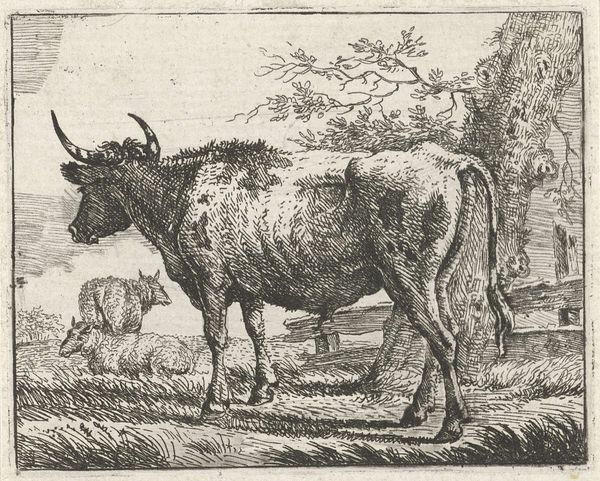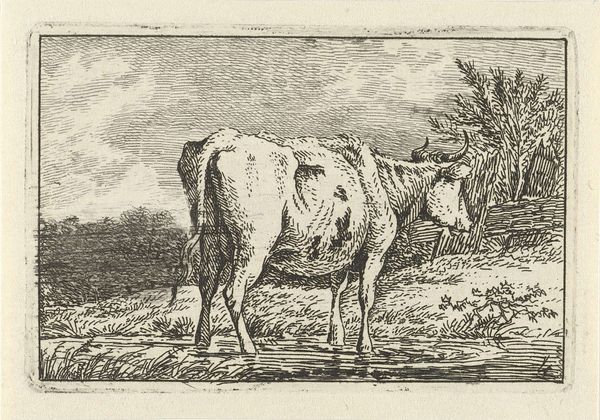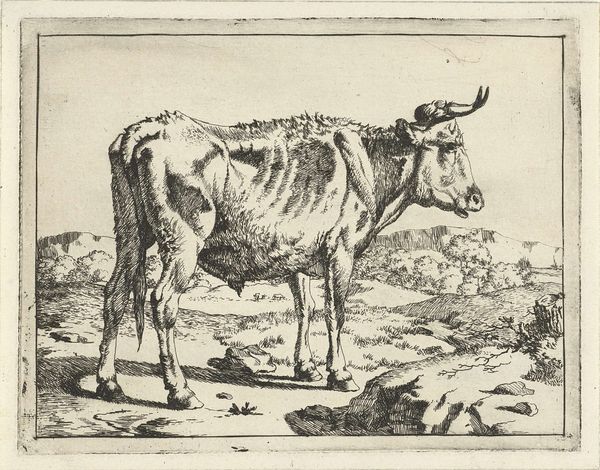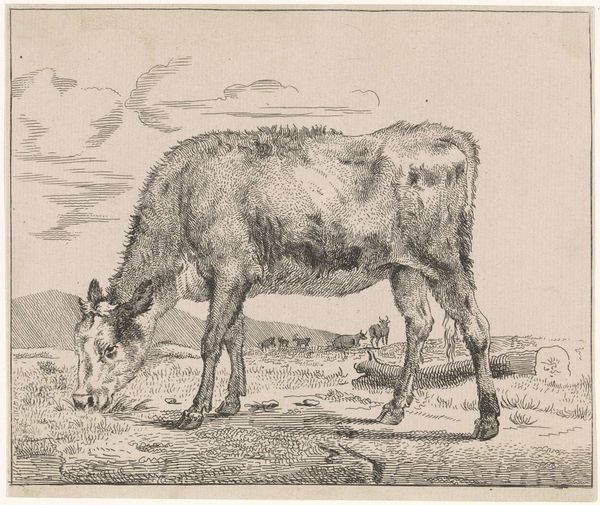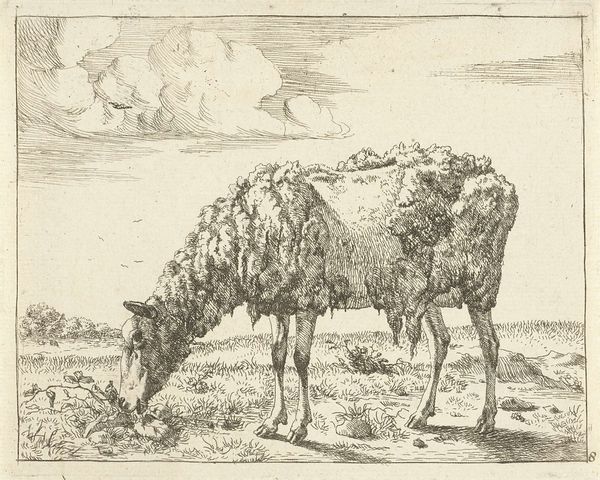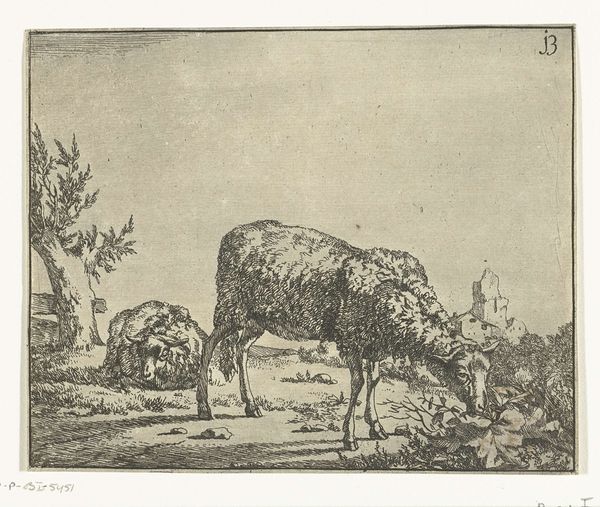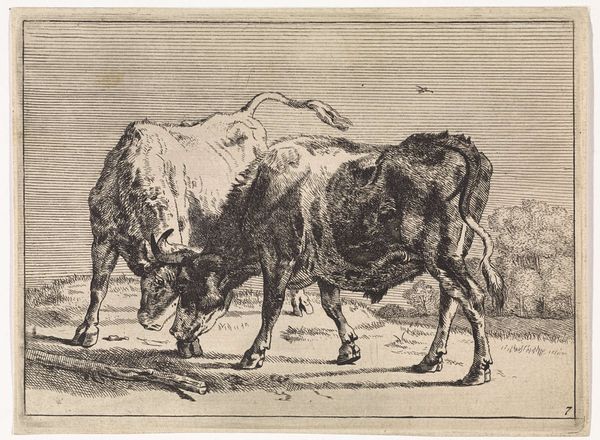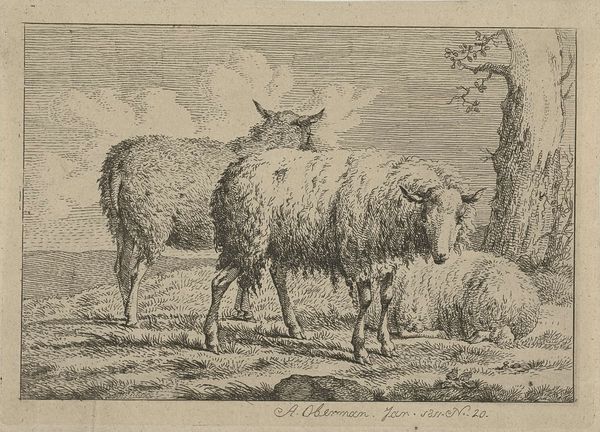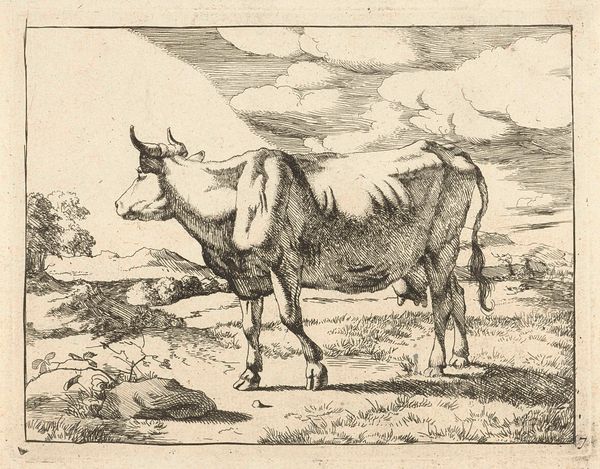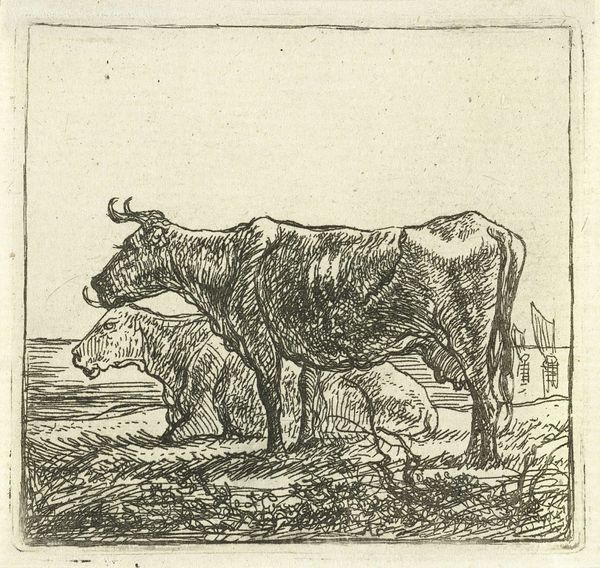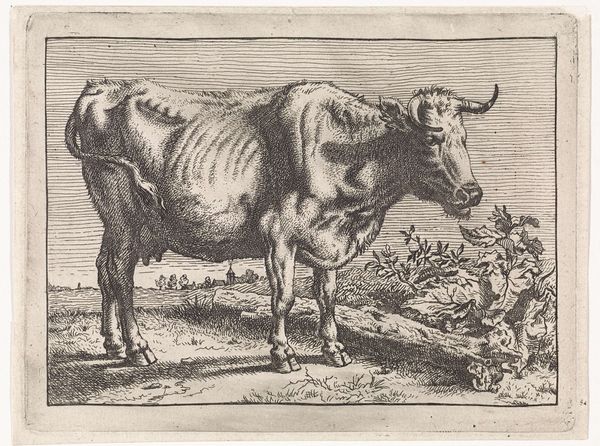
drawing, print, etching, engraving
#
drawing
#
pen drawing
# print
#
etching
#
landscape
#
engraving
#
realism
Dimensions: height 58 mm, width 92 mm
Copyright: Rijks Museum: Open Domain
Curator: Well, well, a cow! A rather lovely one at that. The “Gevlekte koe” as it is known here at the Rijksmuseum is a print by Anthony Oberman. It’s hard to give a precise date, but it likely originates from sometime between 1796 and 1845. Editor: Immediately, I’m struck by the level of detail Oberman achieves. Look at the density of marks forming the cow’s hide – that really speaks to the labor and skill involved in etching, engraving and drawing like this. It feels so immediate, a connection to the material process. Curator: And the symbolism is right there in front of us, too. In Dutch art, cattle, particularly cows, often represent prosperity and the agricultural prowess of the nation. It embodies the idea of Holland as a rich, fertile land. There's a strong connection to Dutch identity at play. Editor: Certainly, and looking at the composition – a single cow dominates the space, but isn’t overly idealized. The material reality is still at the forefront – you see the details of her anatomy, the dirt, it feels connected to an actual animal living and producing. Curator: That's a great observation, the realism here certainly differs from idealized pastoral scenes of other cultures, which serves the purpose of bringing us closer to home and to what the public values. There’s this connection to nature and local identity woven into the artwork that speaks volumes to a specific cultural outlook. Editor: The work seems incredibly detailed yet quite spare, but in black and white etching, engraving and drawing we feel invited into the process by which Oberman carefully constructed the scene using a collection of lines. Curator: What I enjoy most is how these historical prints offer a glimpse into past ideologies and viewpoints of life. You have the artist’s perception combined with the values embraced by their viewers; there is so much to analyze. Editor: And for me, it’s always grounding to come back to the sheer materiality of a work like this – to think about the labor involved, the social context that allowed for such artistry, and to connect it to our own moment of material consumption and artistic production. Curator: It provides some deep insight when one starts analyzing art’s function as more than just decor; rather seeing them as vehicles carrying centuries’ worth of thoughts, feelings, and beliefs. Editor: Yes, tracing the evolution of cultural memory in visual form. A single cow then ends up embodying this historical trajectory. Fascinating!
Comments
No comments
Be the first to comment and join the conversation on the ultimate creative platform.
